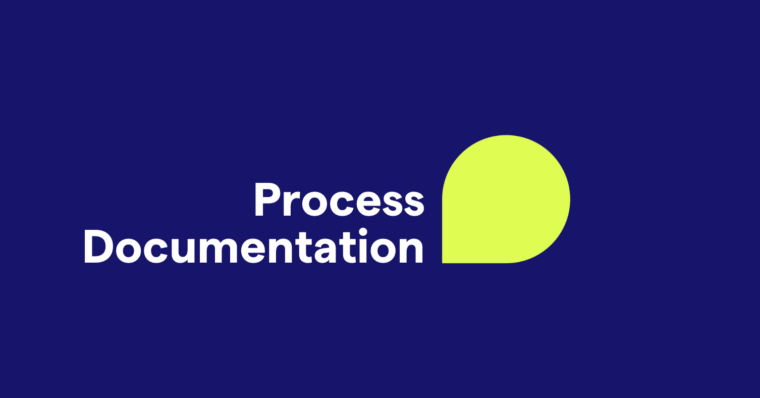
Efficiency and organization are critical in any workplace project. A project plan serves as a detailed guide that helps teams stay organized and on track. It can be the deciding factor in staying within budget and meeting deadlines.
In the following blog post, we’ll walk you through how to create a project plan. Read on to learn what’s included in a project plan and the best practices for writing a project plan.
Table of contents
Key elements of a project plan
Steps to create a project plan
What is a project plan?
A project plan, also called a work plan, is a document that covers everything about a project. It’s part roadmap, part checklist, and part blueprint.
Project plans, created by project managers, outline the scope, goals, deliverables, and timeline of a project. Typically written after a stakeholder review of a project charter, the plan is shared with the team for clarification and discussion. In the early stages, it serves as a guideline for deliverables, while in later stages, it helps measure progress and keeps the team aligned with the project’s vision, milestones, and due dates.
Project charter vs. project plan
A project plan is a detailed roadmap that a team follows from a project’s start to its delivery. It contains all the details the team needs to get the job done, like the order in which deliverables must be completed, how the project is to be tracked, the due dates for each component of the project, and how the project tasks are delegated.
A project charter, in contrast, is a more high-level document. It details the project’s scope, milestones, deliverables, and a general timeline but does not include the specific details found in a project plan. In relation to one another, a project proposal comes first. Then the project charter follows, and the project plan comes after that.
Purpose of a project plan
A project plan’s primary purpose is to keep the team aligned as they work to complete it. This has numerous ripple effects, like answering team members’ questions before they arise and providing a framework for decision-making and execution.
A project plan also keeps stakeholders aligned with a project’s objectives. Sharing the project plan before work begins and referring to it with each milestone and/or deliverable keeps stakeholders in the loop about a project’s progress, giving them the opportunity to ask questions and provide feedback at key junctures.
Key elements of a project plan
| Project overview/executive summary | Brief description of the project. It includes objectives and key deliverables. |
| Project objectives and goals | Clear, specific, measurable goals |
| Scope statement | A statement about what is included in the project |
| Deliverables | The project’s tangible outputs |
| Project schedule/milestones | Key dates and points in the project’s timeline |
| Resource plan | Summary of the resources used and how they are allocated |
| Budget estimate | Estimation of the project’s costs and allocations |
| Risk management plan | Potential risks and associated mitigation strategies |
| Stakeholder list | List of key stakeholders |
| Communication plan | Frequency and type of communication between the project manager and stakeholders |
| Project organization and roles | Team structure and individual responsibilities |
Steps to create a project plan
1. Define project objectives
Before writing a project plan, define the project’s objectives.
- What will you achieve with this project?
- What are the benefits it will deliver?
- What are the problems it will solve?
After defining the project’s objectives, you can extrapolate its benefits like increased social media engagement, greater brand recognition, increased sales, or a more efficient workflow, just to give a few examples. If the objective is to resolve an existing problem, note this problem clearly in your brainstorming notes.
As you brainstorm and write objectives, ensure they follow the SMART criteria:
- Specific. Are they focused on a specific challenge or goal?
- Measurable. Can you quantify progress toward the objectives? How?
- Assignable. Are there clear roles that can be delegated to specific individuals?
- Realistic. Is it reasonable to expect the stated outcome with the resources available?
- Time-related. Is there a clear timeline for achieving the stated goals?
2. Engage stakeholders
Schedule time to speak with each stakeholder. Ask about what they need and how this project will meet their needs. This could involve some back and forth between stakeholders, especially as you narrow down project goals and reach a consensus. If there are multiple stakeholders and varying needs, holding a meeting with all parties may be beneficial.
3. Establish project scope
With input from stakeholders, the next stage is to establish the project’s scope. State the specific deliverables.
Write a scope statement that clearly defines all aspects of the project’s scope.
4. Break the project into tasks
Create a work breakdown structure (WBS). Break the project into small chunks, defining deliverables for each phase. As you do this, assign team members to specific tasks.
5. Develop a timeline
Once you have an idea of each step in the project’s progress, create a timeline by putting them in sequential order. Grammarly’s compose feature can help with this. Other tools you can use in this stage include Gantt charts to visualize schedules and interactive checklists such as those in CoSchedule and Notion.
6. Estimate resources and costs
Determine the following:
- Who will work on the project
- The equipment the team will use
- The materials necessary for the project
Work out a few different scenarios, like outsourcing part or all of the work and keeping it in-house. This will give you a few different budget estimates, which you can then use to solidify your project plan. Remember to account for contingencies like rush fees and revisions.
7. Plan for risks
Some projects are riskier than others. You may face issues, like a tech failure or shipment delay. As you develop your project plan, assess these risks realistically, determining their probability and how each could impact the project. Then, develop a mitigation strategy for each risk, assigning responsibility for managing specific risks to relevant team members.
8. Draft a communication plan
A communication plan is a crucial part of a project plan. Remember, the whole point of the project plan is to keep the team on track and ensure the project runs efficiently. Communication, both between team members and between you and the project’s stakeholders, is key.
Determine how you’ll communicate, such as through email, meetings, reports, or dashboards. You may want to schedule meetings at specific points as well as set up a channel for day-to-day communication. As you do this, define roles for updating and sharing project progress.
9. Build a quality-assurance process
Build quality reviews into your timeline and assign quality control responsibilities.
Quality assurance is an overarching goal for any project plan. In your specific project plan, determine how you’ll define a quality product. This could be established data against which your product performs or designs that fit an established brand identity.
10. Get approvals and finalize the plan
With a draft ready, present it to stakeholders. They may provide feedback, and if they do, incorporate their suggestions into the next draft. Before starting work, ensure that the team understands their roles and responsibilities.
11. Execute and monitor the plan
Start the project by reviewing the plan with the team. At this stage, introduce the tracking and communication tools that will be used. In the following days and weeks, monitor progress and make adjustments as needed, such as due date changes or reassigning tasks.
12. Document lessons learned
Once the deliverables are in the client/stakeholders’ hands, conduct a project closure meeting. In this meeting, record all successes, challenges, and areas where workflow can be improved. Grammarly can streamline this process by organizing your data and insights into easy-to-read documentation. This documentation can help you write more effective project plans in the future.
Best practices
One of the most effective ways to learn how to write strong project plans is to look at an example of a project plan. Your company may have examples archived, or you can find them online.
Be proactive about collaborating with key stakeholders. This means communicating with them regularly before you begin writing the plan and taking the time to understand what they really need. Keep them in the loop as the project progresses as well—at every milestone, be sure to obtain all necessary approvals. This can prevent oversights and delays.
In your written project plan, clarity and conciseness are key! Make these top priorities. Whether you need help getting started, revising, or proofreading, Grammarly can help.
Take advantage of Grammarly’s AI business tools to help bring your ideas to life:
- Our AI business name generator helps you instantly generate catchy, brandable company names that resonate with your audience and industry.
- Our AI business plan generator helps you create a personalized, compelling business plan executive summary.
- Our AI value proposition generator helps you generate a compelling value proposition statement.
- Our AI slogan generator helps you create a catchy slogan that captures the essence of your brand, campaign, product, or service.
Project plan FAQ
What is the most important step in writing a project plan?
The most important step in writing a project plan is defining the project’s goals and outcomes.
How do I ensure stakeholder buy-in for my project plan?
Stakeholder buy-in is generally most likely when the project plan has clear objectives and a linear, step-by-step process for reaching them.
What tools can I use to create a project plan?
Grammarly provides numerous tools you can use when writing a project plan, like the compose feature and proofreading.
How do I manage changes to the project plan during execution?
Communicate the need to make changes to stakeholders and team members. After you’ve made changes, share a revised version of the plan with all parties.
What are common mistakes to avoid when writing a project plan?
Common mistakes include:
- Insufficient detail in the plan
- A lack of clarity regarding goals, outcomes, and roles
- Not including enough time for contingencies
- Not assessing risks and creating mitigation strategies






